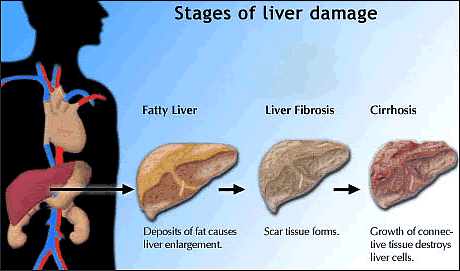Hepatocellular Carcinoma Rates Vary Widely Across Sex and Racial/Ethnic Groups
By
Liz Highleyman Chronic
hepatitis B or C, heavy alcohol use, and
other conditions that damage the liver can progress over years or decades to severe
fibrosis, cirrhosis, or hepatocellular
carcinoma (HCC), a form of primary liver cancer. 
The
overall incidence of HCC in the U.S. has risen in recent years, presenting a serious
public health challenge. But the distribution of liver cancer in the population,
and variations in risk according to demographic group, have not been well characterized.
As
described in the June 2008 American Journal of Medicine, Robert Wong from
the University of California at San Francisco and Douglas Corley from Kaiser Permanente
Northern California conducted a retrospective study to evaluate sex-specific,
race/ethnicity-specific, and age-specific variations in HCC incidence from 1992
through 2004.
They used data from the Surveillance, Epidemiology, and
End Results (SEER) program, administered by the National Cancer Institute, which
collects incidence and survival data from population-based cancer registries throughout
the U.S.
Results
•
With men and women combined, HCC incidence was highest among Asians, nearly double
the rate of white Hispanics (11.0 vs 6.8 per 100,000 person-years).
•
The combined Asian rate was more than 4 times higher than the rate for Caucasians
(11.0 vs 2.6 per 100,000 person-years).
•
Among males, liver cancer rates doubled every 10 years from age 30 to 50 years.
•
Females reached cancer rates comparable to those of males about 10-15 years later.
•
For all racial/ethnic groups, HCC rates among females peaked at significantly
lower values compared with men.
"Marked
differences in the incidence rates of hepatocellular carcinoma by sex, ethnicity,
and age of diagnosis likely represent variations in risk factor distributions
(e.g., viral hepatitis) and possibly in host genetics or other environmental factors,"
the study authors concluded.
They added that, "An individualized
approach tailored to specific risk profiles may more effectively identify treatable
tumors than more general guidelines."  | | What
is Hepatocellular Carcinoma? Most primary liver cancers are classified as hepatocellular
carcinoma. Hepatocellular carcinoma is a malignant tumor composed of cells resembling
hepatocytes ; however, the resemblance varies with the degree of differentiation
. Hepatocellular carcinoma is commonly associated with cirrhosis |
|
7/25/08 Reference
 R
Wong and DA Corley. Racial and ethnic variations in hepatocellular carcinoma incidence
within the United States. American Journal of Medicine 121(6): 525-531. June 2008.
(Abstract) R
Wong and DA Corley. Racial and ethnic variations in hepatocellular carcinoma incidence
within the United States. American Journal of Medicine 121(6): 525-531. June 2008.
(Abstract)
|
| |
